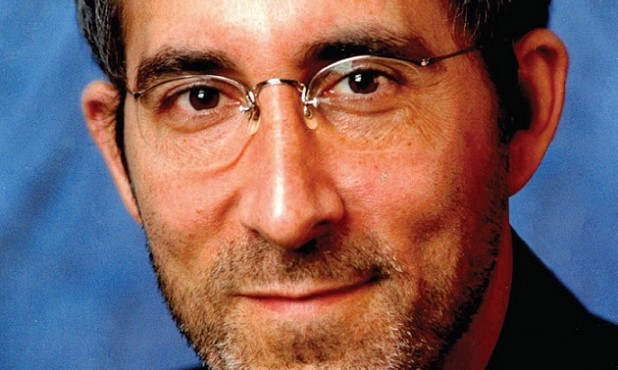
CHICAGO—As reported yesterday in GlobeSt.com, Jonathan Holtzman's new firm City Club Apartments began directly managing five of its 30 properties on May 1, and by year's end will manage the entire $2 billion, 10,000-unit apartment and penthouse portfolio. But the company also has a $500 million development pipeline, which consists of six mixed-use communities. And before the company fulfills its plans to go truly national, and even international, it will focus much of its attention on Midwest cities such as Cincinnati, Minneapolis, Detroit, and Kansas City.
Holtzman created the Farmington Hills, MI-based company last year by selling his 50% interest in Village Green Holding Co. to Compatriot Capital, Inc. Village Green specialized in transforming historic structures into luxury apartments and mixed-use communities. Soo Line City Apartments in Minneapolis and Randolph Tower City Apartments in Chicago are just two examples of how the company brought new life to urban neighborhoods.
“Institutional capital likes the smile of America,” he tells GlobeSt.com, meaning West Coast cities such as Seattle, San Francisco and Los Angeles, across the Sun Belt and then up the East Coast. But for “42 years, I've liked the nose of America.”
“I think the Midwest cities have been ignored,” he adds. “Most of the institutional capital is not in the Midwest.”

The company will soon begin preleasing its City Club Apartments in Cincinnati's CBD, a historic office building conversion to a mixed-use development with hundreds of apartments. Why Cincinnati? Holtzman says Amazon has decided to create a $1.4 billion hub at the Cincinnati/Northern KY airport, part of a larger move to lessen its dependence on UPS and FedEx. Furthermore, GE has also decided to expand its Cincinnati operations this year.
Both moves are good examples of what is happening in many Midwest cities. Each has a plethora of Fortune 500 companies, many of which are expanding, and educated workforces that desire luxury apartments in restored historic buildings. “And we find ourselves with limited competition in most of these cities,” says Holtzman.
The company does, however, plan to expand to the East Coast, as well as Europe and Asia. And as it expands, City Club will begin rethinking the apartment concept itself. “The apartment industry has been designing the same product since the 1960s,” says Holtzman. “Granite countertops are one new idea, but the floor plans are the same.” By contrast, the hospitality industry has created several kinds of new hotel concepts in the same time period.
And as a company dedicated to long-term holds, rather than the more common build-and-sell method, Holtzman says his new firm is well-placed to create new concepts. “The industry has been driven by the needs of capital, and that has been a check on the things that the customers want.”

CHICAGO—As reported yesterday in GlobeSt.com, Jonathan Holtzman's new firm City Club Apartments began directly managing five of its 30 properties on May 1, and by year's end will manage the entire $2 billion, 10,000-unit apartment and penthouse portfolio. But the company also has a $500 million development pipeline, which consists of six mixed-use communities. And before the company fulfills its plans to go truly national, and even international, it will focus much of its attention on Midwest cities such as Cincinnati, Minneapolis, Detroit, and Kansas City.
Holtzman created the Farmington Hills, MI-based company last year by selling his 50% interest in Village Green Holding Co. to Compatriot Capital, Inc. Village Green specialized in transforming historic structures into luxury apartments and mixed-use communities. Soo Line City Apartments in Minneapolis and Randolph Tower City Apartments in Chicago are just two examples of how the company brought new life to urban neighborhoods.
“Institutional capital likes the smile of America,” he tells GlobeSt.com, meaning West Coast cities such as Seattle, San Francisco and Los Angeles, across the Sun Belt and then up the East Coast. But for “42 years, I've liked the nose of America.”
“I think the Midwest cities have been ignored,” he adds. “Most of the institutional capital is not in the Midwest.”

The company will soon begin preleasing its City Club Apartments in Cincinnati's CBD, a historic office building conversion to a mixed-use development with hundreds of apartments. Why Cincinnati? Holtzman says Amazon has decided to create a $1.4 billion hub at the Cincinnati/Northern KY airport, part of a larger move to lessen its dependence on UPS and FedEx. Furthermore, GE has also decided to expand its Cincinnati operations this year.
Both moves are good examples of what is happening in many Midwest cities. Each has a plethora of Fortune 500 companies, many of which are expanding, and educated workforces that desire luxury apartments in restored historic buildings. “And we find ourselves with limited competition in most of these cities,” says Holtzman.
The company does, however, plan to expand to the East Coast, as well as Europe and Asia. And as it expands, City Club will begin rethinking the apartment concept itself. “The apartment industry has been designing the same product since the 1960s,” says Holtzman. “Granite countertops are one new idea, but the floor plans are the same.” By contrast, the hospitality industry has created several kinds of new hotel concepts in the same time period.
And as a company dedicated to long-term holds, rather than the more common build-and-sell method, Holtzman says his new firm is well-placed to create new concepts. “The industry has been driven by the needs of capital, and that has been a check on the things that the customers want.”
Want to continue reading?
Become a Free ALM Digital Reader.
Once you are an ALM Digital Member, you’ll receive:
- Breaking commercial real estate news and analysis, on-site and via our newsletters and custom alerts
- Educational webcasts, white papers, and ebooks from industry thought leaders
- Critical coverage of the property casualty insurance and financial advisory markets on our other ALM sites, PropertyCasualty360 and ThinkAdvisor
Already have an account? Sign In Now
*May exclude premium content© 2025 ALM Global, LLC, All Rights Reserved. Request academic re-use from www.copyright.com. All other uses, submit a request to [email protected]. For more information visit Asset & Logo Licensing.








